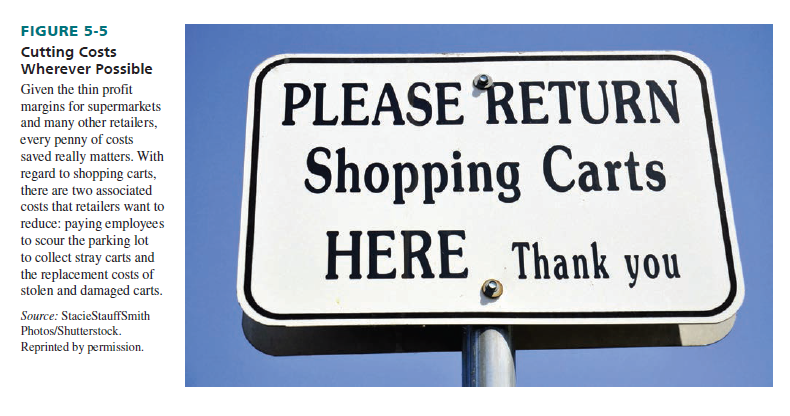Forward-looking firms know their individual strategies must adapt as retail institutions evolve over time. Complacency is not appropriate. Many retailers have witnessed shrinking profit margins due to intense competition and consumer interest in lower prices. This puts pressure on them to tighten internal cost controls and to promote higher-margin goods and services while eliminating unprofitable items. Let’s examine how firms are reacting to this formidable challenge through mergers, diversification, and downsizing, as well as cost containment and value-driven retailing.
1. Mergers, Diversification, and Downsizing
Some retail firms use mergers and diversification to sustain sales growth in a highly competitive environment (or when the institutional category in which they operate matures). For stronger firms, this trend is expected to carry over into the future.
Mergers involve the combination of separately owned retail firms. Some mergers take place between retailers of different types, such as the ones between Sears (the department store chain) and Kmart (the full-line discount store chain) and between upscale Saks Fifth Avenue and Lord & Taylor (both owned by mainstream Hudson’s Bay). Other mergers occur between similar types of retailers, such as two banks (Bank of America acquiring Commerce Bank) and supermarket chain Royal Ahold merging with Delhaize Group. By merging, firms can jointly maximize resources, enlarge their customer base, improve productivity and bargaining power, limit weaknesses, and gain competitive advantages. It is a way for resourceful retailers to grow more rapidly and for weaker ones to enhance their long-term prospects for survival (or sell assets).
With diversification, retailers become active in businesses outside their normal operations, perhaps adding stores in different goods/service categories. That is why Bed Bath & Beyond now owns and operates Christmas Tree Shops (a bargain store chain), Harmon, and Harmon Face Values (discount store chains that emphasize cosmetics and health-and-beauty aids), as well as buybuy BABY (a store chain with 20,000-plus items targeted to parents of infants and young children).
Although the size of some retail chains has grown due to mergers and diversification, not all firms have done well with that approach. Even though stronger firms are expanding, we are also witnessing downsizing—whereby unprofitable stores are closed or divisions are sold off—by retailers unhappy with performance. Because Kmart’s diversification efforts had poor results, it closed or sold its ventures outside the general merchandise store field (including Borders bookstores, Builders Square, Office Max, Payless shoe stores, and Sports Authority). It also closed many Kmart stores after merging with Sears.
The interest in downsizing will likely continue. Various retailers have overextended themselves and do not have the resources or management talent to succeed without retrenching. In their quest to open new stores, certain firms have chosen poor sites (having already saturated the best locations). Retailers such as Barnes & Noble are more interested in operating fewer, but larger, stores and more effectively using the Web. Supermarket retailers are finding they can do better if they are regional rather than national.
2. Cost Containment and Value-Driven Retailing
With a cost-containment approach, retailers strive to hold down both initial investments and operating costs. Many use this strategy due to intense competition from discounters, the need to control complicated chain or franchise operations, high land and construction costs, the volatility of the economy, and a desire to maximize productivity. The mature, highly saturated market; a slow-growth environment; competitive pressure to serve customers through multiple channels; and firms’ inability to raise prices make it imperative for retailers to drive down costs. They must examine every aspect of their businesses to streamline processes and costs. See Figure 5-5.
Cost containment can be accomplished by one or more of these approaches:
- Standardize operating procedures, store layouts, store size, and product offerings.
- Use secondary sites, freestanding units, and locations in older strip centers or occupy sites abandoned by other retailers (second-use locations).
- Place stores in smaller communities where building regulations are less strict, labor costs are lower, and construction and operating costs are reduced.
- Use inexpensive construction materials, such as bare cinder-block walls and concrete floors.
- Use plainer fixtures and lower-cost displays.
- Buy refurbished equipment.
- Join cooperative buying and advertising groups.
- Encourage manufacturers to finance inventories.
- Use shipping techniques that reduce inventory carrying costs.

A driving force behind cost containment is the quest to provide good value to customers. However, value is typically subjective. It can be based on price, quality, service, convenience, or a combination of them. Price usually has a big role in what shoppers purchase and the firms they patronize. The pricing strategies of some retailers—especially discount retailers—encourage people to look for bargains and to be wary of sale prices. Smart shoppers have learned that price may not be a true measure of quality. They can get good quality with everyday low pricing.9
Source: Barry Berman, Joel R Evans, Patrali Chatterjee (2017), Retail Management: A Strategic Approach, Pearson; 13th edition.

I like this website its a master peace ! Glad I noticed this on google .